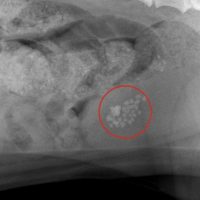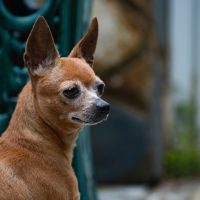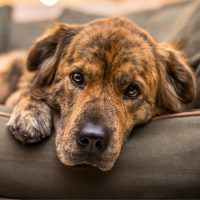Recognizing and treating pain in dogs has evolved dramatically over time. Since dogs are living longer and longer, they are also experiencing the deterioration and debilitation that goes along with aging.
People eventually develop arthritis and pain as they age, and I understand the same thing happens in dogs. How can I recognize if my dog is becoming painful so that I can bring it to the attention of my veterinarian?
Aging includes the development of osteoarthritis, which involves painful inflammation of the joints. It is a dog’s instinct to hide or mask its pain, making pain difficult to diagnose. No one is in a better position to identify the subtle changes in behavior that may signal pain than human family members. When a dog is experiencing pain, the following are changes that you may notice. These signs will signal the need to visit your veterinarian.
Vocalizing. You may notice your dog groaning or grunting when he stands up or lays down. You may hear him whining or whimpering as he tries to get comfortable.
Changes in activities of daily living. You may notice pacing or restlessness because your dog cannot find a comfortable place to lie down. Likewise, he may repeatedly get up and lie down in an attempt to find a comfortable position. You may notice he has less energy, or decreased endurance for previously enjoyable activities like walks and play, chasing a ball, or swimming. Once down, he may be reluctant to get back up. He may be less eager to jump up onto a bed or onto furniture. It may be more difficult for him to get into the car for a ride. You may notice trembling in his legs (particularly the rear legs). He may become reluctant to go up or down stairs. Finally, he may develop difficulty walking on slick floor surfaces.
Changes in daily habits. A dog who is in pain may withdraw from his usual family interactions. He may become less engaged in his surroundings. You may notice decreased eating and/or drinking. You may also notice changes in sleeping patterns – some painful dogs sleep more, while others sleep less. Some painful dogs have lapses in house training because it is uncomfortable to get up to go outside. It is painful to get into position to urinate or defecate, so he may hold his urine or stool for so long that he has accidents.
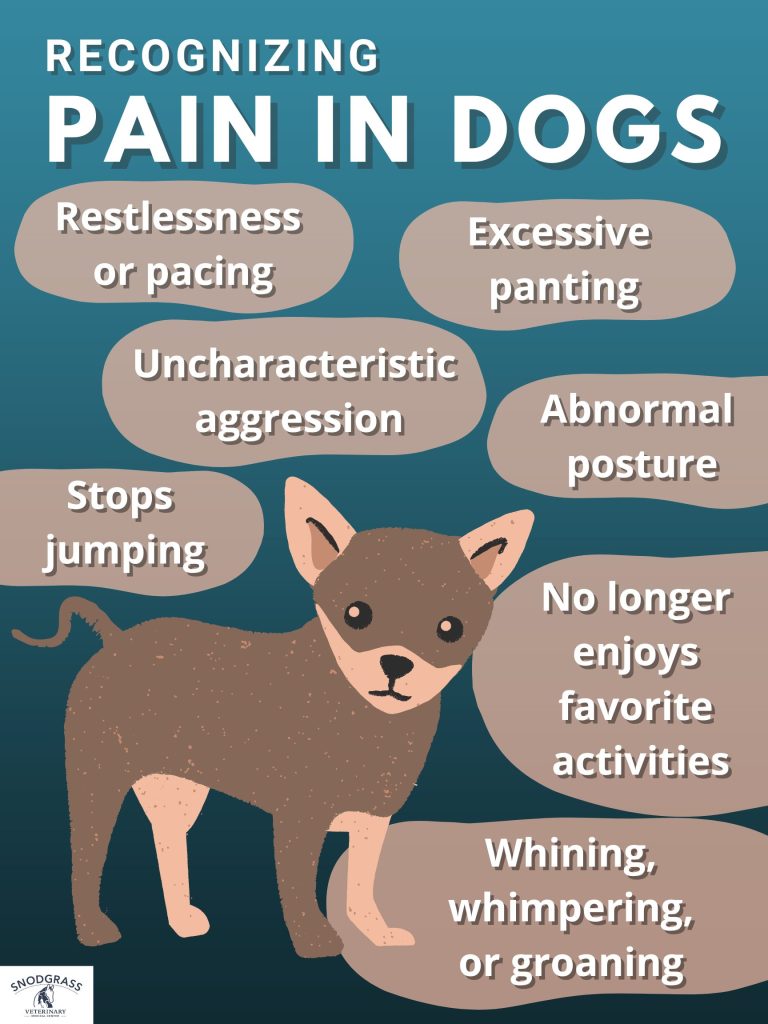
Self-mutilation. Some dogs will lick obsessively at areas of the body that are painful. He may chew at the offending areas, removing hair and actually damaging the skin.
Changes in facial expressions. A dog who is in pain may pant excessively, even at rest. His facial expression may be described as a grimace, and he may seem to have a vacant stare off into space. Some painful dogs actually have a wide-eyed look. Other dogs may appear to be half asleep with partially closed eyelids. This facial expression may result from a lack of sleep because he has difficulty getting comfortable.
Uncharacteristic aggression. Painful dogs who have previously been very friendly and gentle may begin to act completely out of character. He may growl when people or other pets in the household approach him, and he may lash out if handled. He may resent being brushed or combed and may appear to have a very defensive posture when simply lounging around the house, watching carefully what is happening around him in order to avoid painful encounters.
Abnormal postures. A painful dog may stand with his front legs back under his chest in order to take some of the weight away from painful hips or rear legs. You may notice that once he sits, his rear legs splay off to the left or right, rather than being tucked underneath as is normal. When standing up he may seem to pull himself up by his front legs, rather than pushing himself up with his rear legs. He may also prefer to sit rather than to stand, and to lie down rather than to sit when stopping along the way during a walk.
Any or all of these changes may indicate pain and should be brought to the attention of your veterinarian. It is now understood that the sooner pain is recognized and managed, your dog’s quality of life will be maintained, as well as your dog’s (and your family’s) daily living activities.
© Copyright 2020 LifeLearn Inc. Used and/or modified with permission under license.
